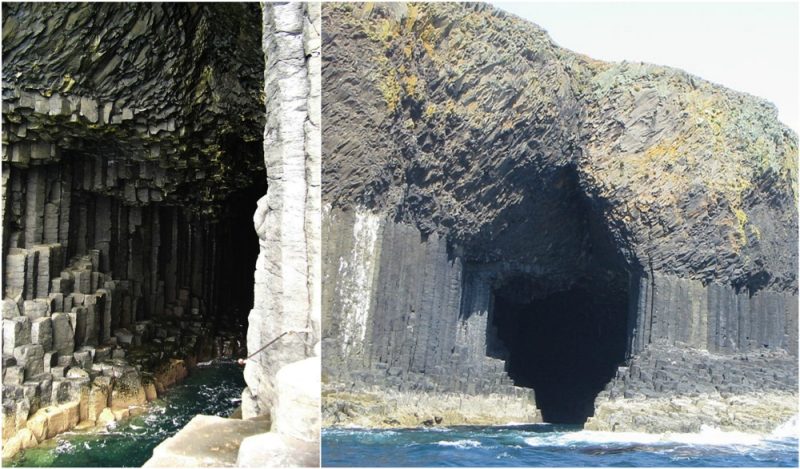An astounding creation that evokes images of fantasy worlds, Fingal’s Cave is a demonstration of nature’s absolute power. Located on the Scottish island of Staffa, this sea cave is 72 feet tall and 270 feet deep, which adds to its remarkable appearance, consisting of hexagonal columns of basalt shaped in six-sided pillars.
It is one of the many sea caves on the small island, and, as the most popular of them all, has been mentioned and depicted in numerous written and visual works from the 19th century onward.
There is much folklore surrounding the cave from the times of the ancient Scottish Celtics and Irish people and it can be found in some of their legends. According to one of the Irish legends, “The Cave of Melody,” or “Uamh-Binn” in Celtic, was once a part of a bridge across the sea which was built by the Irish giant Fionn mac Cumhail (aka Finn McCool).
The giant longed to get to Scotland so that he could fight his giant rival, Benandonner. The same legend refers to the creation of another bridge with a similar blockish look, known as the Giant’s Causeway in Northern Ireland. The legend has it that these two structures formed the two ends of the giant’s bridge.
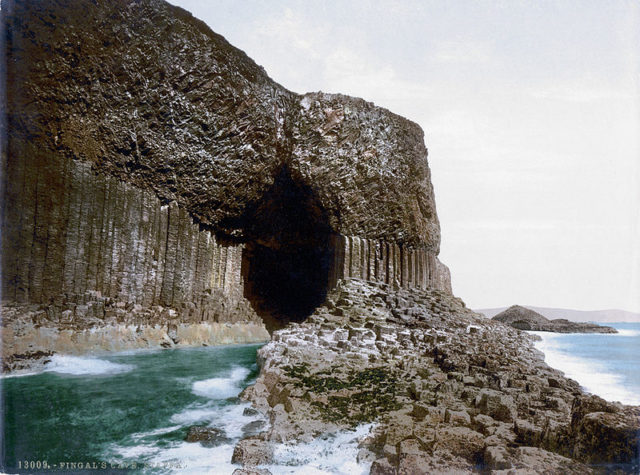
Surprising as it may seem, this legend uniting the two structures can be scientifically supported. The island of Staffa is an entirely volcanic island with authentic geological features, such as the multitude of caves and the basalt column. These features are typical for both the Giant’s Causeway and the Fingal’s Cave that, presumably, were formed from an ancient, massive lava flow that made a bridge between both sites. The slow cooling of the lava created the exceptional pattern of the hexagonal columns which formed the surface of the caves.
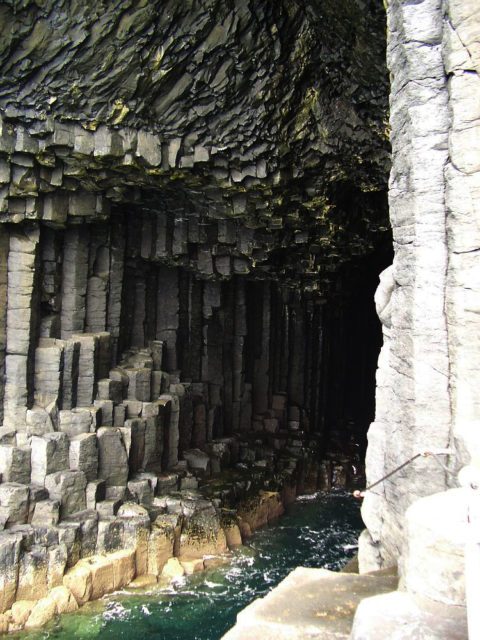
View author information
CC BY-SA 3.0
Fingal’s Cave is wrapped in another mythical reference, this time concerning the origin of its name. The mythical story goes back to 250 AD and its protagonist is the Irish general Finn MacCumhaill, known as Fingal. General Fingal had a group of loyal warriors, similarly to the story of King Arthur and his followers at the Round Table. Fingal was the father of Ireland’s traditional troubadour and poet, named Oisín. When the Gaels left Ireland and migrated to Scotland, they brought the stories of Fingal with them and preserved the memory of his character. Soon, Fingal was honored by the Scottish, who, inspired by the heroic verse and songs of Ossian, assigned his name to the breathtaking cavern.
In 1772, the cave was rediscovered by the naturalist Sir Joseph Banks in the same period of popularity as the poetic series “Fingal, an Ancient Epic Poem in Six Books” by James Macpherson, translated from old Gaelic. These poems highly influenced Banks, and even Goethe and Napoleon. Reportedly, inspired by the Irish legend, Banks decided to name the cave as Fingal’s Cave. Upon its discovery, a number of artists found themselves completely captivated by its magnificence.
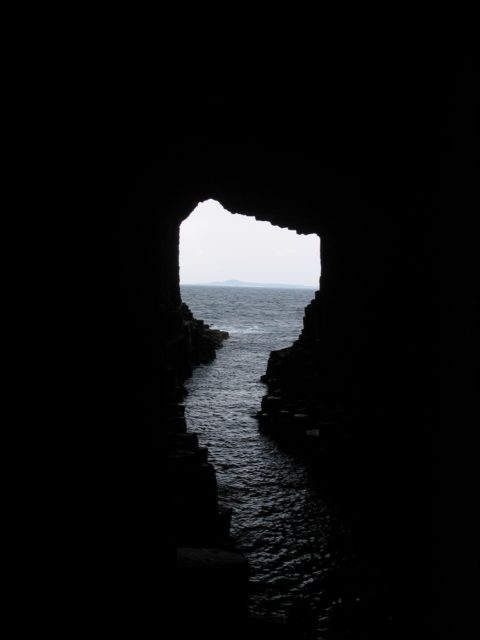
Sir Walter Scott described his experience of entering the cave as one of the most spectacular places he ever set foot. He admired its grandiose pillars as miraculous, marble-like structures that stood firmly embracing the deep, fierce sea.
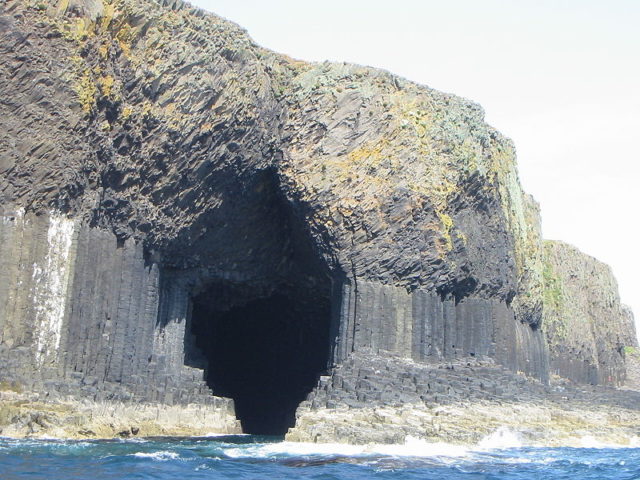
Moreover, Felix Mendelssohn Bartholdy’s “Hebridean Overture [Fingal’s Cave]” was conceived by the impressions and the awe that this artist felt encountering the wondrous cavern. This composition emphasized the cave’s uniqueness to such a level that at the time, over 300 people visited it each day, traveling by paddle steamers. Among the visitors were notables such as John Keats, Joseph Turner, Queen Victoria, and William Wordsworth.
